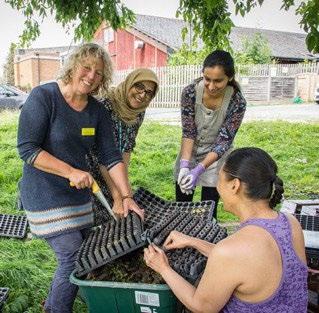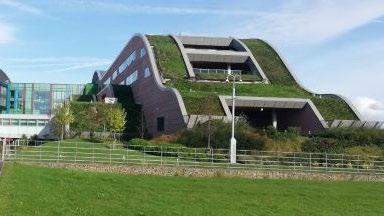
2 minute read
The green NHS
Rachel Stancliffe, founder of the Centre for Sustainable Healthcare describes some of the ways that CSH is helping to nurture nature connection into the healthcare system. One of the things that first connected me to the environment was health. When I was young, I started getting eczema and hay fever and as a result became very aware of chemicals in the built environment from an early age. The connection between health and the environment and what we are doing to ourselves has been part of my life ever since then. Centre for Sustainable Healthcare aims to bring the message of connecting health and environment to health care professionals in particular - and through them, to everyone who uses the health system.
One of CSH’s first Green Space for Health programme projects was NHS forest. We started off in 2009 by planting trees on health care sites. We felt that trees were a strong a symbol of the natural environment and planting trees on hospital grounds where they're visible was a way to enable people to establish a connection. Since then, the NHS forest has grown into a varied project with a lot of different aspects- around 300 healthcare sites across the UK have joined our alliance, and 100,000 trees have been planted on or near to their estates
Advertisement
The health service can have a slow pace of changeconstantly dealing with emergencies and many other issues means that there can be limited capacity for changing things that may feel “nice to have”. But over the last few years the value of the interconnections between health and nature has clearly become more appreciated. Covid has helped people to stand back and re-engage with nature and to think differently about what we want and need for our own health and our own well-being. As a result, concepts and projects like the NHS Forest have really grown.
We have started to develop a Nature Ranger programme because we realized that to get busy people and patients and other people engaged, you need a dedicated resource. A Nature Ranger is based on an NHS site but they are an ecologist by background and are actively responsible for developing deeper nature connection. There are five Nature Rangers now in different hospitals around the country and we hope to spread that model.

Another wonderful example of integrating health and nature on a significant scale, is Alder Hey children's hospital. This hospital was designed to fit into the natural landscape - and actually built into a park. A crucial step in the development was consultation with patients, and in particularly with children, to ensure that the building was co-designed with the users. Of course, most of the buildings that we have in the NHS are not being built from new, but there is also lots that we can do with retrofitting- to integrate use of nature into how the health system works. Take rehabilitation for example we can create walkways on hospital sites that enable people to practice steps that will help their bodies get back to health while experiencing the natural environment. If we think creatively about how people experience nature as part of health, we can help make those connections in terms of their everyday work both as staff and as patients.








